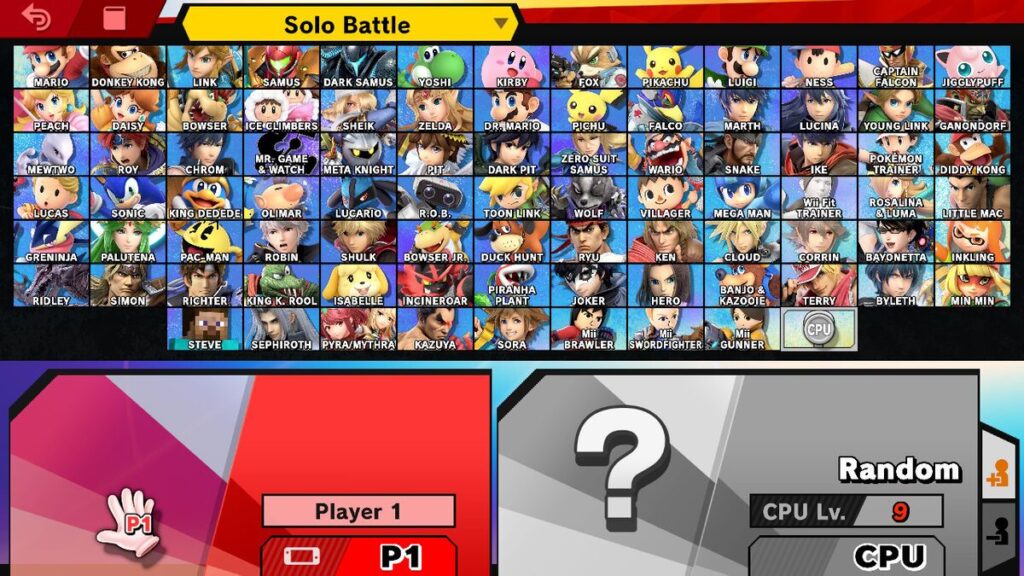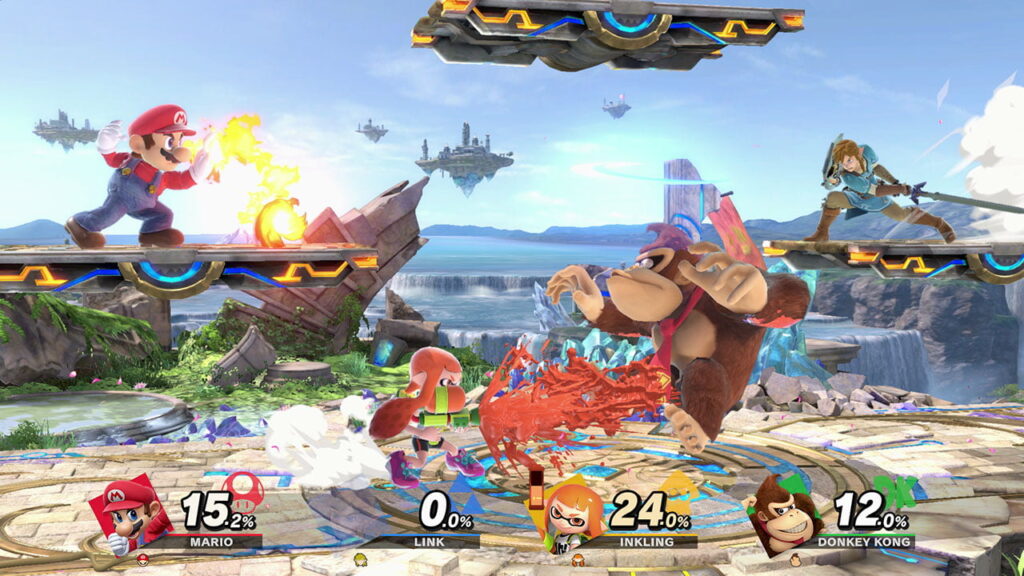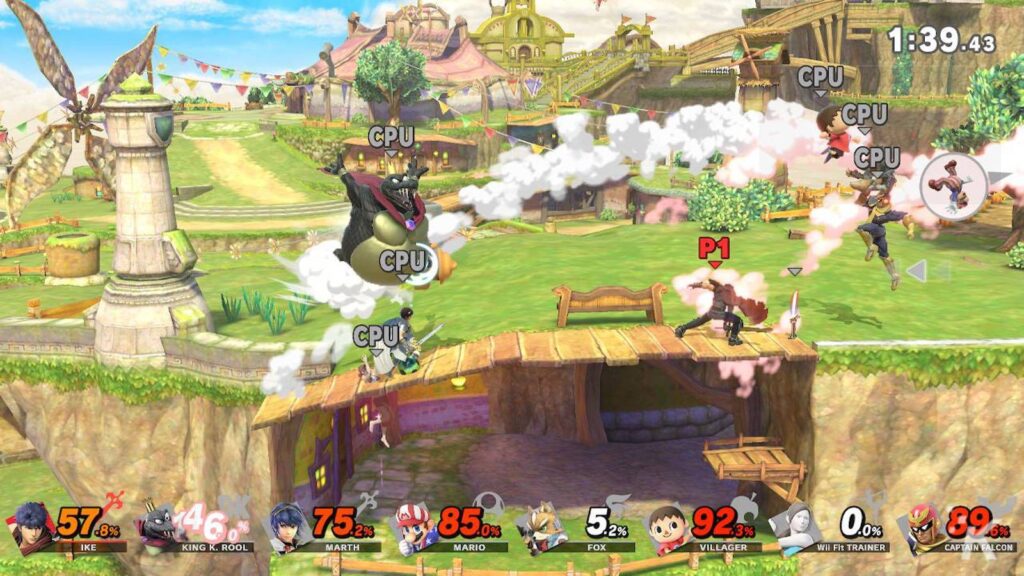In the realm of video games, Super Smash Bros. is a series that needs no introduction. Whether you were around for its humble beginnings on the Nintendo 64 or grew up with its sequels as I did, it is hard to find someone who doesn’t know of the ultimate fictional crossover (I know what I said).
However, since its launch in 2018, I believe it is no understatement to say that Super Smash Bros. Ultimate has reached a completely new level. In almost every aspect, Ultimate provides an experience befitting its status in the symbolic ‘Gaming Hall of Fame.’ Whether through its mechanics, design, presentation, or level of dedication and care for its source material, I’m not sure we’ll ever see a game quite like this again.

When you first boot everything up, you may be surprised by how little is initially on offer. Only eight of Nintendo’s classic characters make up the starting roster, and the side content appears relatively sparse at first glance. But the longer you play, the more you realize just how much there is to unlock. Including DLC content, there are 89 characters, 115 stages, 207 unique items (including assists and Pokémon), 1064 music tracks, and official representation for 225 distinct gaming franchises!
Whether it’s Mario or Sonic, Doom or Metal Gear, Street Fighter or Tekken, it’s all represented in some form. The fact that characters such as Steve from Minecraft (owned by Nintendo’s rival, Microsoft) or Sora from Kingdom Hearts (owned by Disney, the lich of entertainment) were able to join the roster speaks volumes about the prestige that Smash has garnered and the dedication of its developers. Even if actually playing the game were a lackluster experience, I’d still commend Ultimate for being a true celebration of gaming history. Thankfully, there isn’t much to worry about on that front either.

From the very beginning, Smash Bros. has been split between its nature as a chaotic party game and its growing competitive community, and this has led to many issues that have long plagued the series. Super Smash Bros. Melee became famous as one of the most difficult competitive fighting games ever, contrasting Super Smash Bros. Brawl’s reputation as one of the slowest and most cumbersome. Striking the right balance between easy to learn and hard to master was integral in finally pushing the series forward, and I believe Ultimate does exactly that.
The speed at which characters move and react has been heavily increased over previous games, and the overarching design has been tweaked to allow for high level techniques and character-specific depth. For example, Terry has a meter that gives him unique finishing moves after taking enough hits, and Simon’s projectiles allow him extended combo opportunities with proper setup. But even considering those elements, Ultimate remains a remarkably simple game. Each character is given one attack button, one special move button, one grab button and one shield button, and you only need one or two of those to successfully play the game. Winning a match is as simple as sending your opponent flying off the screen.
If items are introduced, mashing your fingers against the controller is a completely viable strategy, and I’m happy to admit that some of the most fun I’ve had with the game has come from situations in which I’m playing with a group of complete newbies. Whether you’re a pro looking to hone your skills or someone who’s never touched a fighting game in their life, Ultimate feels as if it were made with you in mind.

However, that doesn’t mean everything is necessarily perfect. While the core fighting experience is finely honed and offers plenty of options to spice up the experience (including arcade, squad, and tournament style matches), straying to secondary modes yields less consistent results.
The adventure mode, dubbed “World Of Light,” tries to fill the role of a story campaign, but is lacking compared to the rest of the game. Despite the novelty of their inclusion, the overworld and “spirit” characters feel remarkably low-budget, and there are very few cutscenes to break up the gameplay (a noted disappointment given the potential interactions). The gimmick-based battles on offer are fine for those who yearn for single player content and the overall length is considerably long, but I couldn’t help feeling disappointed when comparing it to other, more tailored story modes like Super Smash Bros. Brawl’s “Subspace Emissary.”
In a similar vein, playing online is far from ideal, with most matches generating significant input delay even playing one on one. With a wired LAN adapter, I was able to play at a respectable speed for some matches, while others were so slow it left me wondering if my Switch had finally begun to fry itself.
Verdict
In the end, when faced with the overwhelming amount this game does well, it’s difficult to consider its issues a true blemish on the experience. As someone who grew up on these characters and the games they star in, their representation here is nothing short of exemplary. Each new franchise added to the mix reminds me again and again how special Smash is in both concept and execution.
The level of care put into every aspect and the sheer amount of content shoved into a $60 game goes above and beyond any expectations I could’ve had. Whether it be as a party game, a competitive game, or a beacon for the gaming community, I couldn’t be happier with how it all turned out. I may still have a few lingering characters and additions I want to see, but if this is the last Smash game we ever get to enjoy, I honestly believe I’d be content with that.


Excellent website and review!